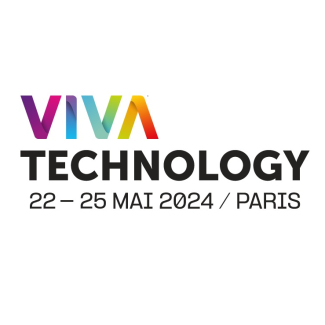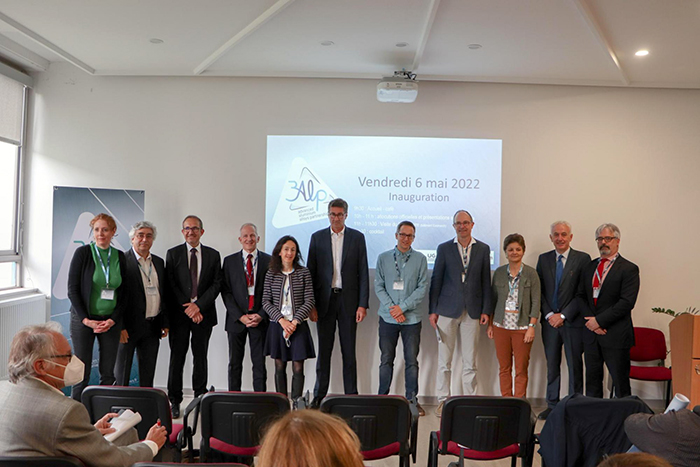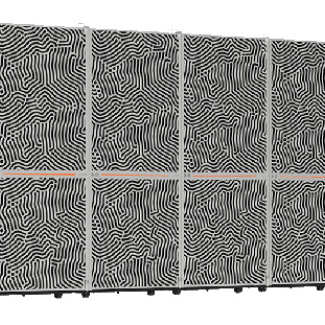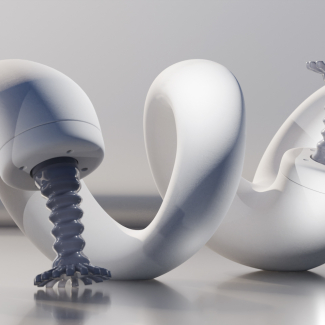
Launch of 3ALP, a public-private laboratory dedicated to the aluminium of the future
|
|
Constellium, a leading global supplier of aluminium products, the CNRS, and l’Université Grenoble Alpes (UGA) have combined their expertise through the creation of the “Advanced Aluminium Alloys Partnership” (3ALP) joint laboratory. The goal is to develop research on the recyclability and durability of aluminium, and to work on new and innovative research methodologies as well as new aluminium-based materials.
Parts that resist longer, processes that are both more economical and environmentally friendly, these are some of the key issues in metallurgy across all sectors of its application, especially with regard to aluminium products for automobiles, packaging, and aeronautics, for which the Constellium industrial group is a leading global supplier.
With the aim of imagining and designing new generations of aluminium alloys, Constellium and the CNRS, in association with UGA, have created a joint laboratory, the most ambitious form of collaboration between business and academic research.
The 3ALP joint laboratory will rely on the recognized expertise of the Materials and Processes Science and Engineering Laboratory (SIMAP; CNRS/UGA) in conceiving metal alloys and innovative processes, such as additive manufacturing1 . Its creation follows over 40 years of collaboration between SIMAP and C-TEC, Constellium’s R&D centre located in Voreppe, near Grenoble.
For the scientists, cooperation with C-TEC provides an opportunity to remove constraints faced by the metallurgy sector, develop focus areas where basic research and industrial considerations converge, and orient research programmes toward applied developments. Through 3ALP, Constellium will gain access to cutting-edge modelling and characterization tools, especially with regard to synchrotron radiation, and will also enjoy the experience of SIMAP scientists in various fields, such as the structural and mechanical properties of materials, the design and implementation of instruments, and the development of artificial intelligence tools for materials.
With their strong complementarity and fruitful past collaboration, the CNRS, Constellium, and UGA expect 3ALP to jointly explore research as well as the development and application of innovative methodologies for new aluminium-based products responding to the needs of both metallurgy and the society of the future. Two ambitious and complementary objectives stand out in particular: sustainable development, notably the extension of aluminium’s recyclability to all of its applications; and the development of new alloy design methods assisted by artificial intelligence.
Engaging partners
The CNRS and joint laboratories
Joint laboratories, which are established for the long term by a CNRS research unit (UMR) and a partner company, are flexible in terms of how they function, and represent a shared investment as part of a programme of common interest.
“I am very pleased to see this coming together with Constellium, which is in keeping with a long history of cooperation. We are constantly pursuing a policy to develop joint laboratories with companies of all sizes, as demonstrated by the more than 200 joint laboratories that already exist. This ambitious form of collaboration between business and academia relies on basic research to provide solutions for major industrial challenges. Our goal is to reach 400 active joint laboratories within the next four years,” emphasizes Antoine Petit, Chairman and CEO of the CNRS.
With more than 40 active joint laboratories, Auvergne-Rhône-Alpes is the leading French region for this form of intensified collaboration between research and companies. Nearly one quarter of these joint laboratories are monitored and led by the CNRS’s Alpes regional office.Constellium
“I am very proud to support the opening of this joint laboratory, and I would like to thank everyone who made this possible, first of all our partners UGA and the CNRS,” indicates Ludovic Piquier, the Senior Vice President of Manufacturing Excellence and Chief Technical Officer of Constellium. “This laboratory will allow us to continue exploring the potential of aluminium, a material for the circular economy of the future.”
Constellium is a global leader in developing and manufacturing high value added aluminium products and solutions. Ranging from thin sheets for cans to thick sheets for airplanes and aluminium extrusions for cars, this supplier conceives, develops, and manufactures products and solutions in partnership with its clients. Its innovations provide clients with greater performance and improved manufacturing processes, and also combine efficiency and sustainable development.
Located in France and particularly in Voreppe (Isère), its technological centre (C-TEC) is home to some of the world’s most advanced aluminium technologies. By making cutting-edge resources available to its team of engineers and technicians—and by collaborating with its clients, universities, and research centres—Constellium has discovered revolutionary solutions that meet challenges in numerous sectors.
UGA and its Grenoble INP – UGA component
With its diversity and pioneering spirit, UGA is a driver of technological, societal, and cultural innovation. Its research and innovation policy balances academic excellence, scientific openness, and technology transfer to organisations, with a view to societal progress. UGA’s strategic plan includes developing a culture of innovation that has a diverse typology, intensity, and transfer avenues in order to increase technology transfer, which drives its intellectual creations and the professional integration of young graduates. Integrating capacities in research, training, innovation, and technology, UGA builds and offers innovation paths for circumstantial collaboration that is both gradual and enduring. The quality of its collaboration initiatives is central to its partner policy. Joint laboratories are the extension of successful collaboration with companies, and 3ALP is in keeping with this framework, anchoring and intensifying collaboration between SIMAP and Constellium in materials science.
Industrial collaboration is in the DNA of Grenoble INP – UGA, the engineering and management institute of UGA. SIMAP, which is exemplary in articulating training, research, and technology transfer, is emblematic of Grenoble INP – UGA. It is based on the Grenoble INP – Phelma school, UGA, and technological platforms such as our CMTC (Consortium for Shared Technological Resources) material characterisation platform, in addition to cutting-edge scientific facilities, most of which are part of the Centre for Eco-design of Architectured Materials (ECOMARCH) at Grenoble INP - UGA. This brand new building (Totem – Tullins firm) was built as part of the most recent State-Region Plan Contract (CPER). The creation of the 3ALP joint laboratory gives concrete form to a lasting industrial collaboration, with a strategic partnership in metallurgy to meet new scientific and technological challenges in this field.

| To know more
|
- 1According to the NF E67-001 standard, the term additive manufacturing includes “any process that manufactures a physical object from a digital object through the layer-by-layer addition of material.” These processes are radically different from conventional subtractive processes that remove material such as machining, or shaping processes such as founding or forging.


